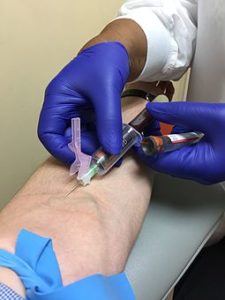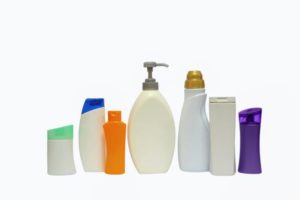 A new report released by the non-profit environmental research organization Environmental Working Group (EWG) has found that up to 420 chemicals known or likely to cause cancer have been measured in people (detected in urine, blood, hair, etc). Exposure to these carcinogens is not just from on-the-job contact with industrial chemicals, but from ordinary everyday exposure such as consumer products, food, water, air, and pesticides used in the home and lawns.
A new report released by the non-profit environmental research organization Environmental Working Group (EWG) has found that up to 420 chemicals known or likely to cause cancer have been measured in people (detected in urine, blood, hair, etc). Exposure to these carcinogens is not just from on-the-job contact with industrial chemicals, but from ordinary everyday exposure such as consumer products, food, water, air, and pesticides used in the home and lawns.
EWG compiled this inventory of known or likely carcinogens that have been measured in people by reviewing scientific literature and publicly available biomonitoring studies. Biomonitoring is the laboratory analysis of blood, urine, serum, saliva, and other body fluids to identify the amount and number of certain chemicals (such as pesticides, fire retardants, BPA, etc) present in the human body. Thus it measures the extent to which chemical pollution is absorbed by our bodies. The CDC has a National Biomoniitoring Program. From Environmental Working Group (EWG):
Hundreds Of Cancer-Causing Chemicals Pollute Americans’ Bodies
Hundreds of cancer-causing chemicals are building up in the bodies of Americans, according to the first comprehensive inventory of the carcinogens that have been measured in people. EWG released the inventory today. EWG spent almost a year reviewing more than 1,000 biomonitoring studies and other research by leading government agencies and independent scientists in the U.S. and around the world. The nonprofit research group found that up to 420 chemicals known or likely to cause cancer have been detected in blood, urine, hair and other human samples.
Studies of the causes of cancer often focus on tobacco, alcohol and over-exposure to the sun. But the World Health Organization and many other scientists believe nearly 1 in 5 cancers are caused by chemicals and other environmental exposures––not only in the workplaces, but in consumer products, food, water and air.
EWG’s review bolsters the findings and ongoing research of the Halifax Project, a collaboration of more than 300 scientists from around the world who are investigating new ways in which combinations of toxic chemicals in our environment may cause cancer. While most cancer research focuses on treatment, the Halifax Project and EWG’s Rethinking Cancer initiative are looking at prevention by reducing people’s contact with cancer-causing chemicals.
“The presence of a toxic chemical in our bodies does not necessarily mean it will cause harm, but this report details the astounding number of carcinogens we are exposed to in almost every part of life that are building up in our systems,” said Curt DellaValle, author of the report and a senior scientist at EWG. “At any given time some people may harbor dozens or hundreds of cancer-causing chemicals. This troubling truth underscores the need for greater awareness of our everyday exposure to chemicals and how to avoid them.”
EWG estimated that a small subset of the chemicals inventoried in the report were measured at levels high enough to pose significant cancer risks in most Americans ––risks that generally exceed Environmental Protection Agency safety standards. But those estimates are only for individual chemicals and do not account for a question scientists and doctors are increasingly concerned about––how combined exposures to multiple chemicals may increase risk?
EWG’s inventory comes at an auspicious moment for the issue of cancer and chemicals. Last week Congress passed the first reform in 40 years of the nation’s woefully weak toxic chemical regulations, which President Obama is expected to sign soon....“Many of the carcinogens this study documents in people find their way into our bodies through food, air, water and consumer products every day. Dozens of them show up in human umbilical cord blood—which means Americans are exposed to carcinogens before they’ve left the womb,” said EWG President Ken Cook. “We should focus on preventing cancer by preventing human exposure to these chemicals.”
 People worry about breast cancer and whether exposure to chemicals "in the environment" can lead to breast cancer. According to many studies the answer is: YES, absolutely - and this is why they are called carcinogens (a substance capable of causing cancer). What are the chemicals?
People worry about breast cancer and whether exposure to chemicals "in the environment" can lead to breast cancer. According to many studies the answer is: YES, absolutely - and this is why they are called carcinogens (a substance capable of causing cancer). What are the chemicals? Also, avoid using pesticides as much as possible, and instead use least toxic Integrated Pest Management (IPM) or organic methods, both inside the home and outside.
Also, avoid using pesticides as much as possible, and instead use least toxic Integrated Pest Management (IPM) or organic methods, both inside the home and outside.